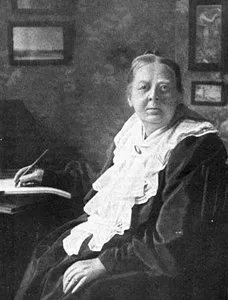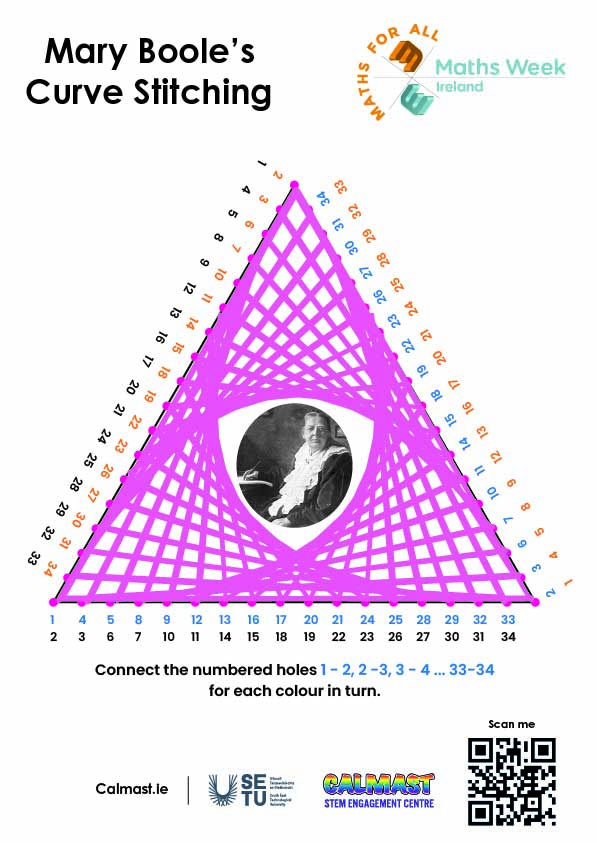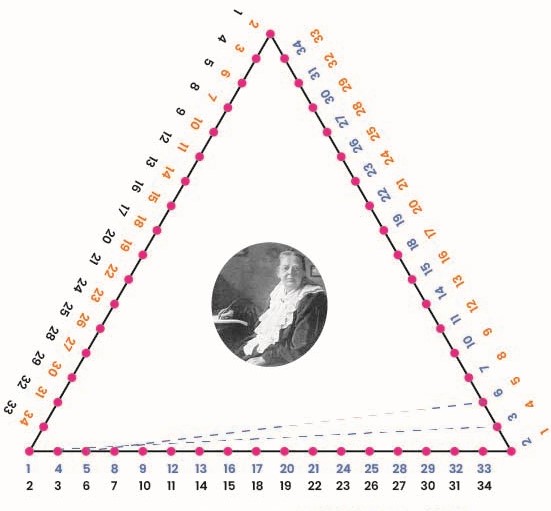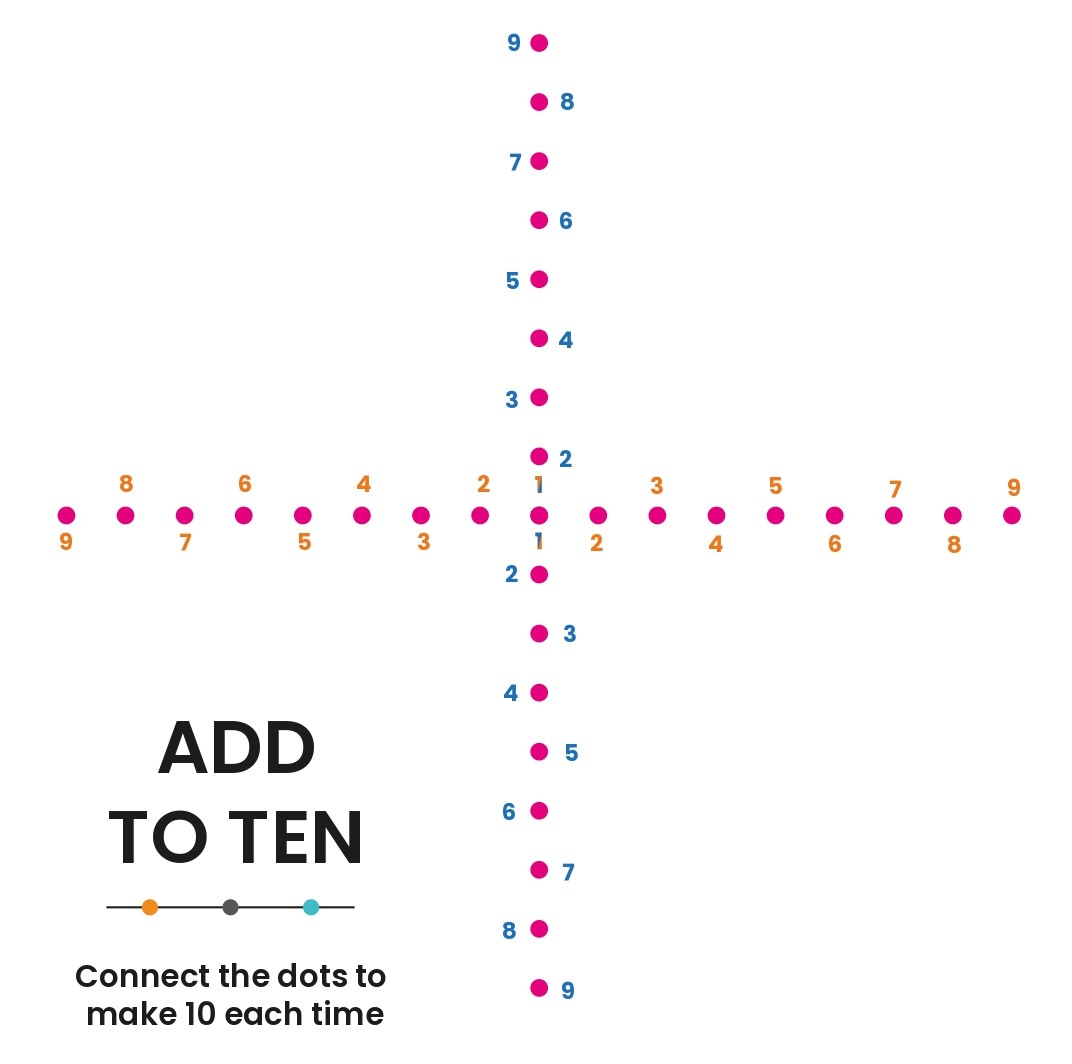MARY EVEREST BOOLE

Who is she?
Meet Mary Boole (née Everest) born on 11 March in Gloucestershire, England. She spent most of her childhood in Poissy, near Paris, before moving back to England and later to Cork in Ireland.
Her education involved a strong focus on mathematics. In time, she married George Boole, who had tutored her and was already settled in Cork as the first professor of mathematics at Queen’s College (now University College Cork). She assisted him in compiling some of his landmark books.
After her husband’s death in 1864, she moved to London, where she took a job as a librarian at Queens College and became known unofficially as a children’s advisor. She was fascinated by the ways in which children learned mathematics. She developed innovative ideas about using physical manipulations to strengthen the ‘unconscious understanding of materials learned in a classroom setting’, such as curve stitching.
Her fascination lay in understanding ‘how people, and especially children, learn mathematics and science using the reasoning parts of their minds, their physical bodies and their unconscious processes’. Recognising that teaching had become monotonous, Mary advocated for more engaging and reflective teaching methods. She wrote several books, including Logic Taught By Love (1890), Lectures on the Logic of Arithmetic (1903) and Philosophy and Fun of Algebra (1909). Coxeter praised her as one of the pioneers of modern pedagogy.
Her five children also achieved success in various fields. For instance, Alicia Boole Stott (1860-1940) became an expert in geometry making original contributions to 4th dimensional geometry, while Lucy Everest (1862-1905) was the first woman to become a Fellow of the Institute of Chemistry (now known as Royal Society of Chemistry).
Mary Boole’s Curve Stitching is a really interesting technique that uses straight lines to create the illusion of curves. The idea is to connect a series of points with straight lines. Mary Boole used this technique to make abstract mathematical concepts more tangible and engaging, particularly for educational purposes. By turning mathematical ideas into hands-on activities, she showed how beautiful and creative mathematics can be, making it accessible and enjoyable for learners of all ages.

Mary Boole’s geometric curve stitching uses simple straight lines to create surprising curved patterns by following a mathematical sequence: beautiful and with mathematical significance. It’s a fun way to see how maths can be used to create art!
These activities are suitable for children aged 6 to 12 and even adults. Please note that this is only an indicative guide; you are best placed to decide whether these activities are appropriate for your child or group.
Children will develop or practice their numeracy and counting skills. But also patience as a soft skill. Both adults and children will enjoy this quiet activity, which combines maths and art, reflection and manual work, with a sense of achievement when the design is revealed!
While these activities can support exploration of deep mathematics our motivation is to provide opportunities for people to play with maths. Children will become familiar with ideas through this play that will benefit them when they meet formal mathematics later on.
An example of this is becoming familiar with tangents as the straight lines we make in curve stitching are tangents to the curves revealed.
As the practical art of sewing perforated card was already quite familiar to me, my brain was free to receive as a seed the discovery I had made, and to let it grow naturally; all the more because no one spoke to me then of tangents, or tried to teach me any algebraic geometry, till some years had elapsed. Therefore, when I did begin to learn artificially about tangents, the teacher was not obliged to put cuttings into raw soil; he found ready a good strong wild stock of living interest in the relation between a curve and the straight lines which generate it, on to which he was able to graft the new knowledge.
Mary Boole – The Preparation of the Child for Science (1904)
Just click on the image to find out more about the curve stitching and download all the instructions you need to get started. We’ve got lots of activities lined up, including playing with additions, matching numbers, following the numbers (dot to dot), and more (to come)!


